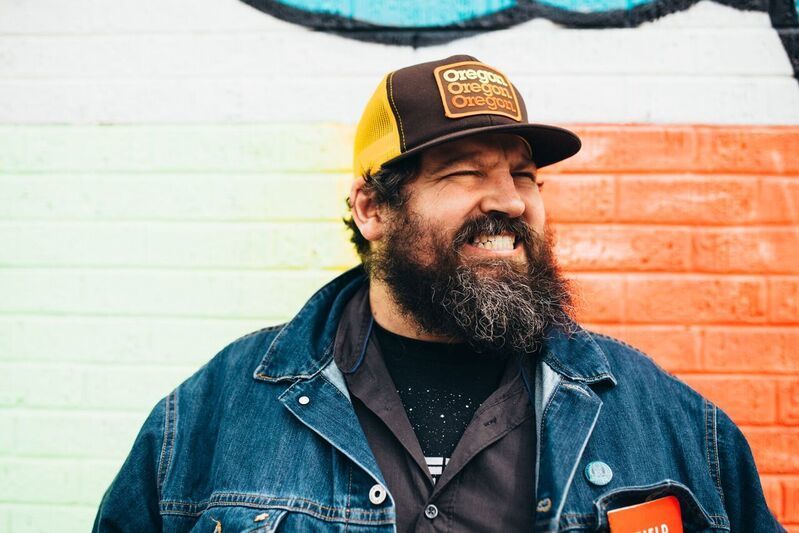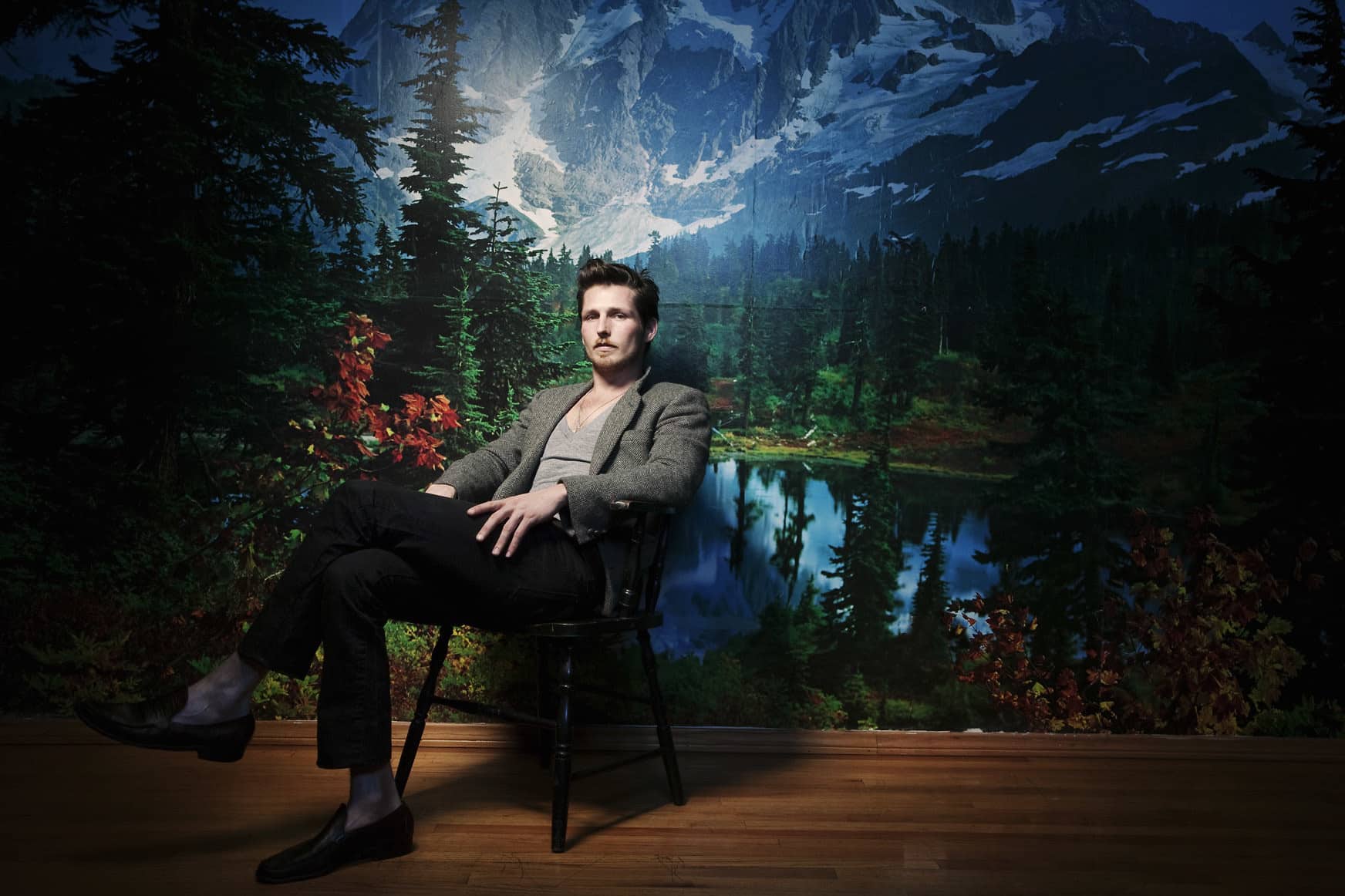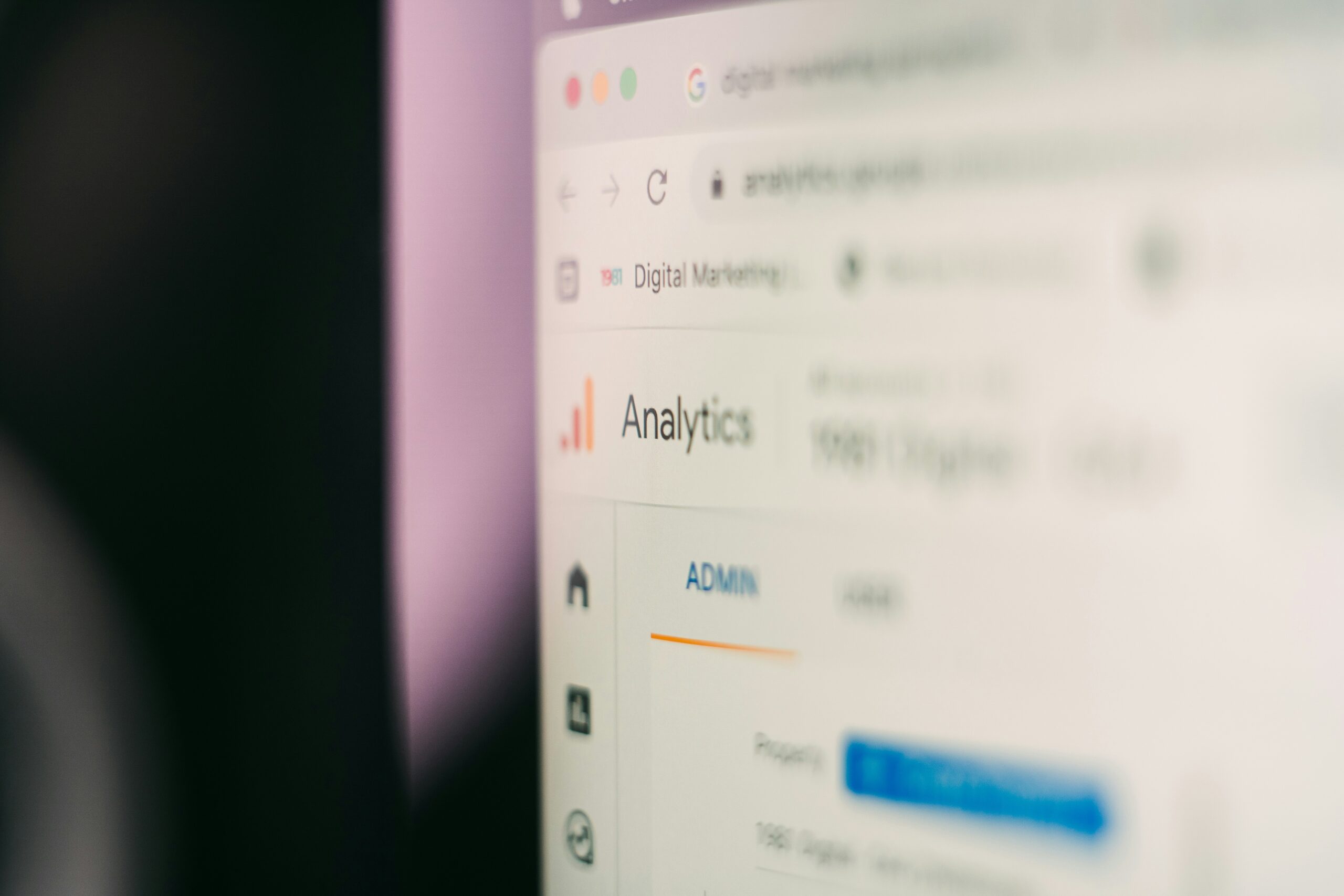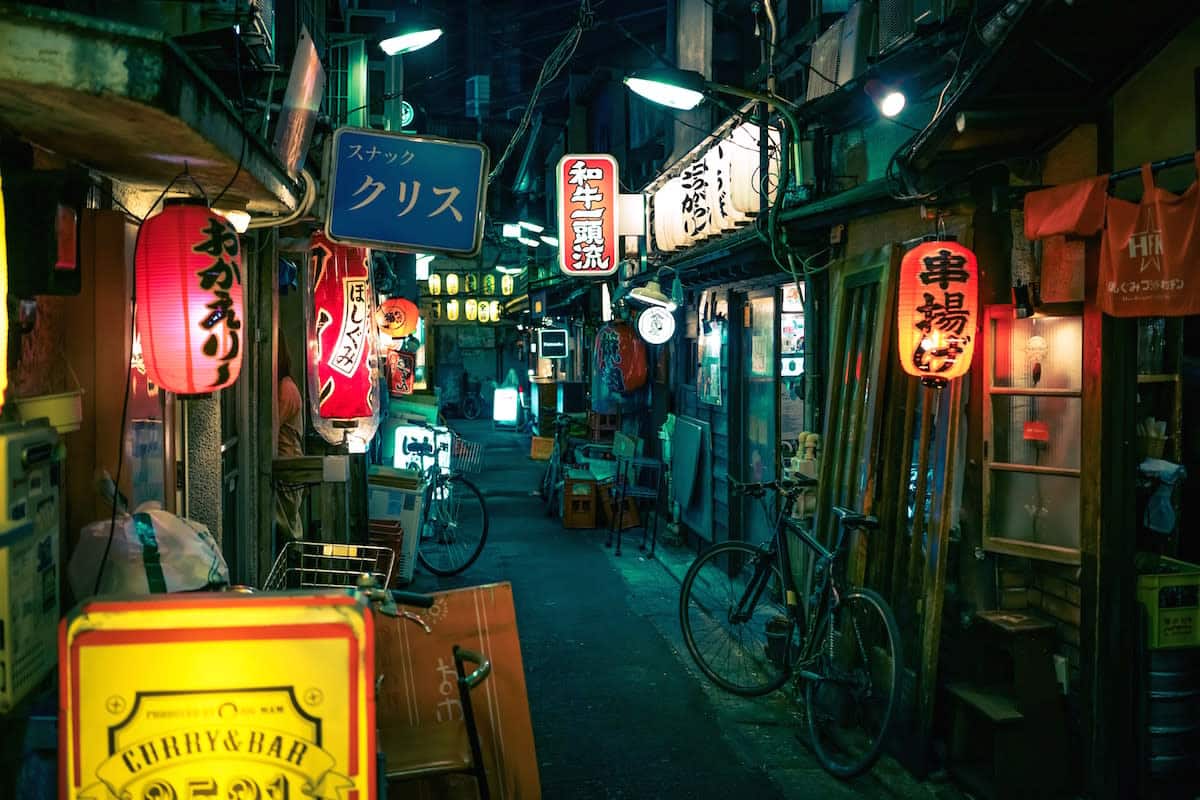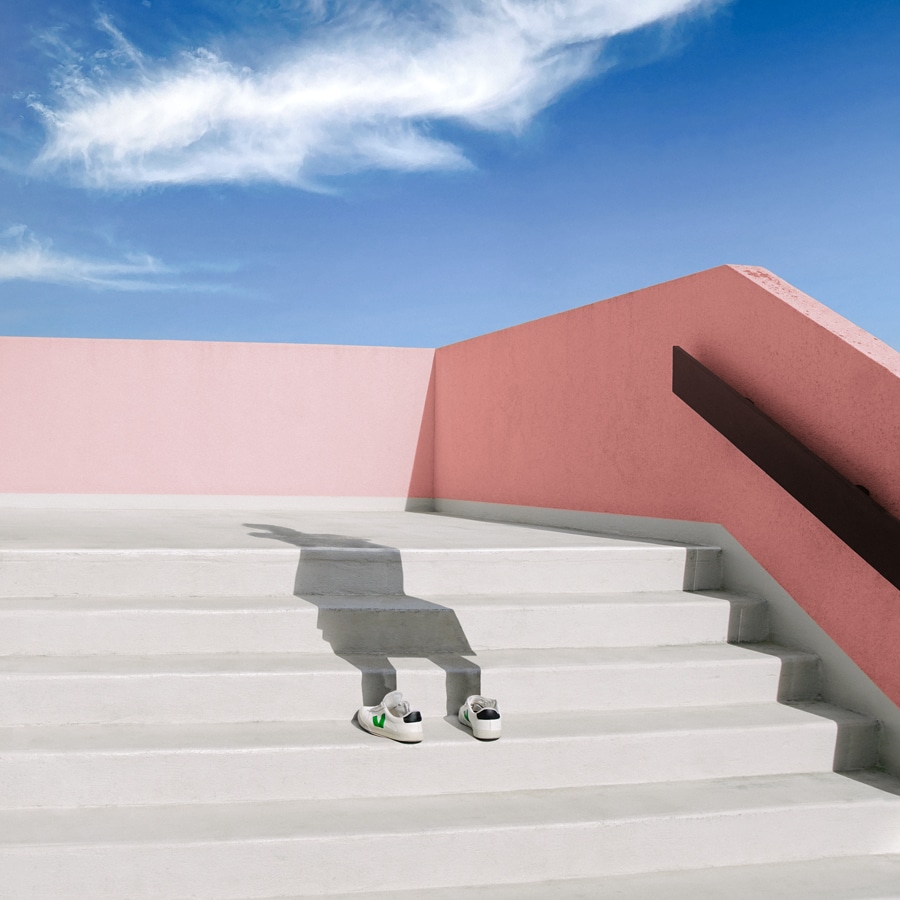Close to the end of a lengthy chat with Aaron Draplin, our conversation slips into a 25-minute discussion on the legacy of Minneapolis punk legends The Replacements. He explains he’s just polished off their recently published biography Trouble Boys in just three days.
“I just love Westerberg, the underdog hero,” Draplin says. It’s not surprising. The Detroit native and head of Portland-based Draplin Design Co., like The Replacements frontman Paul Westerberg, is a Midwesterner and a bit of a working class hero: in pretty much every photo you’re likely to see of Draplin, his fashion sense is decidedly utilitarian, and he prefers to speak about the importance of work ethic rather than waxing poetically about art. In fact, for his entire life in graphic design, he’s rejected any highfalutin attitudes.
“You go and you’re taught to elevate yourself and basically talk down to other people, and I had no part of that shit,” Draplin says about the snootier aspects of art school and design. “I loved going to the Walker Arts Center because it was the highest of culture, but I also loved going to scrap steel yards and shit, because you see design there, too. It’s just a different kind. It’s not as pretentious, obviously, but that’s design, too. I was okay with both ends, but way more comfortable when it was just sort of like crusty and down to Earth.”
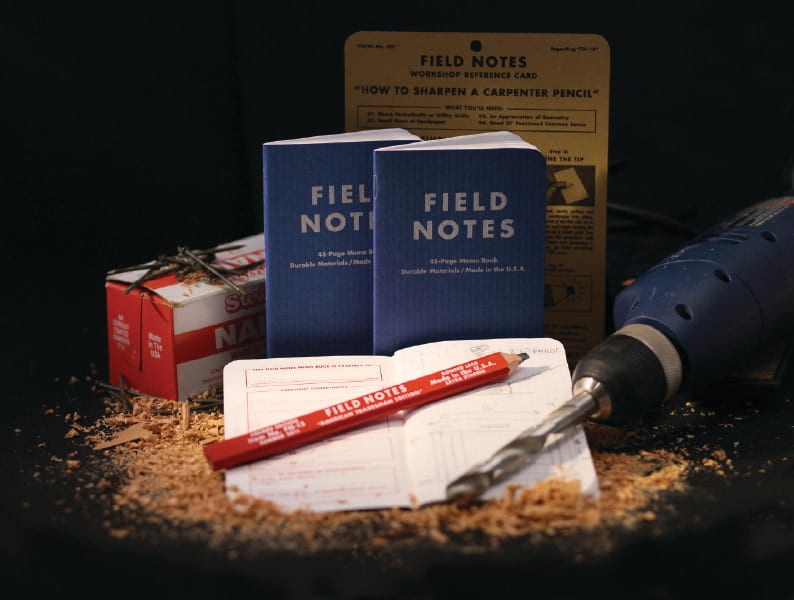
Of course, as much as his work reflects his love of the “crusty,” Aaron Draplin is one of the world’s most recognizable designers thanks, in part, to being a co-founder of the ubiquitous Field Notes brand. He’s putting the “working” in working class hero. When I bring up the blue-collar aesthetic that runs through a lot of his design, he’s quick to note that any perception of him as a “one-trick pony” or workingman’s ambassador is dreadfully inaccurate. “There’s nothing blue-collar about what I do,” he says.
Draplin has been the art director for Snowboarder magazine, worked for giant, sleek brands like Nike, Target, and Forum Snowboards, designed album covers for bands like Richmond Fontaine and the Old 97s, and even recently helped design logos for the American Recovery and Reinvestment Act (ARRA) and the U.S. Department of Transportation’s TIGER (Transportation Investment Generating Economic Recovery) team.
You want people to know that you’re versatile. Because I’ll have kids that get nasty and say, ‘Ah, that Draplin, he’s a one-trick pony with his thick lines and shit.’ Well, that’s because that’s all you’re seein’. I’d wager I’m about a 13-trick pony but that’s just me bein’ a dick.
“I like things that are no bullshit,” Draplin says about defining his aesthetic. “They’re straightforward, they’re bold, they’re meant to be easily reproducible at small sizes at big sizes. That’s just logos we’re talkin’ about. When it gets to things that are really commonplace items like a little coin purse or some envelope opener or something, those things are just meant to be junk drawer items. And I want them to feel comfortable in a junk drawer. I don’t need them to be ironic as much as they were just part of the currency of the landscape of dumb promotional items. But when you switch gears again and say hey—here’s this guy laying out a magazine or laying out a catalog design, he could’ve gone any number of ways, and knew how to do that. You want people to know that you’re versatile. Because I’ll have kids that get nasty and say, ‘Ah, that Draplin, he’s a one-trick pony with his thick lines and shit.’ Well, that’s because that’s all you’re seein’. I’d wager I’m about a 13-trick pony but that’s just me bein’ a dick.”
Draplin outlines his (at least) 13 tricks in the recently released 256-page book titled Draplin Design Co: Pretty Much Everything, “a mid-career survey of work, case studies, inspiration, road stories, lists, maps, how-tos, and advice.” He also has a speaking tour called “Tall Tales From a Large Man”. It’s something he’s gotten “pretty good at,” he says. After 70-minutes of speaking to Draplin, I feel I can vouch for the validity of that statement. But decide for yourself.
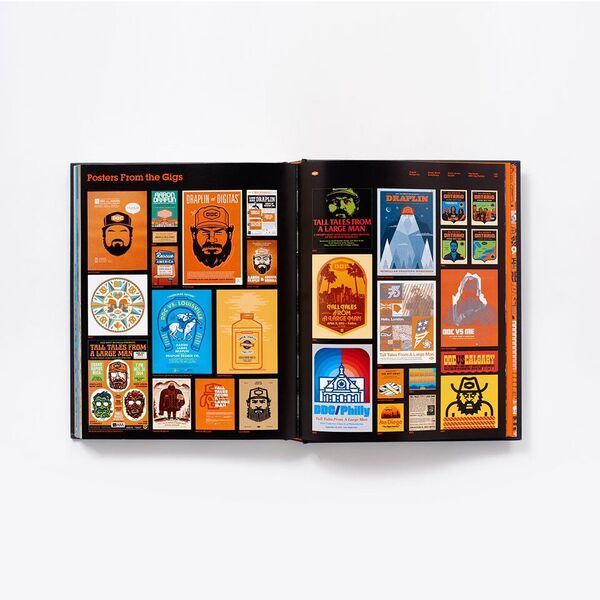
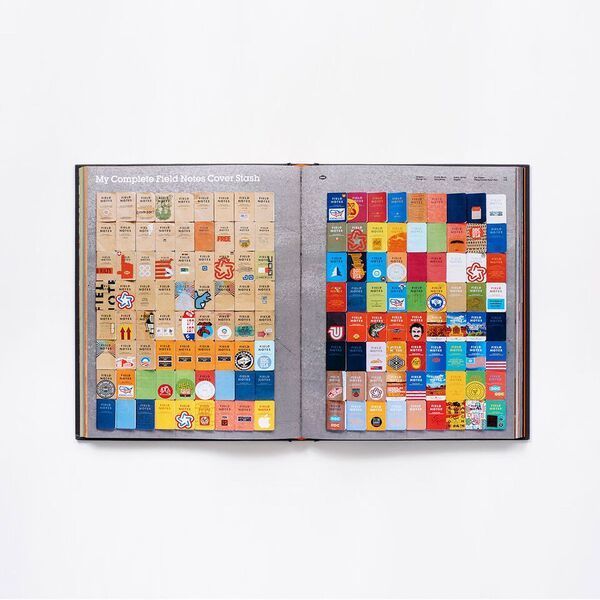
On the practicality of graphic design
“I knew I wanted to do something with art. But being from the Midwest, you have it hanging over you that you can’t really just pick anything. You have to be pragmatic about your decision, right? Right out of high school, fine art was something that scared me because I didn’t want it to be too fluffy and then be angry that it didn’t take off. There was something about graphic design that just made sense. People are always gonna need to read magazines. People are always gonna need to use toilet paper, and there’s a graphic that goes around the toilet paper, and you need to communicate on those items. So there was something practical about graphic design that was really attractive to me.”
On starting out poor and doing it for the love of the game
“When you can start to make money doing the things you like to do, that’s when shit gets really, really cool. But you have to understand, I was okay with it going the other way, and I just accepted that. Because I was told, ‘Shit’s gonna suck, you’re gonna have to work all your life, and that’s just how it goes, punk.’ And I just accepted it.
“When you understand clearly that maybe you’re never gonna make it with this shit, and you’re just kind of okay with that, that’s a cool thing.”
On the importance of being passionate about your work
“How do you want to live your life? Do you want to care about the world and care about your work and care about your output and care about your creativity on this planet? I’d say, ‘Fuck yeah, you do’.
“If your job is just your job, what a bummer of a life. And let’s just say, for some people if that’s what they’re comfortable with, then allow them to be comfortable with it. I don’t need to go judging against any of that shit. I just selfishly was like, ‘Damn, I wanna make a life I love and enjoy, and I wanna see if I can do it, and not have to feel like I hate showing up to my job,’ which was definitely the way it was for a lot of years.”
“I did a lot of that stuff, and through that you get pissed off. You learn whatever little shot I get, I’m gonna take advantage of it, and I’m not gonna be a turd about it. And I’m not gonna drink myself into oblivion or make a bunch of excuses. I’m gonna work hard.”
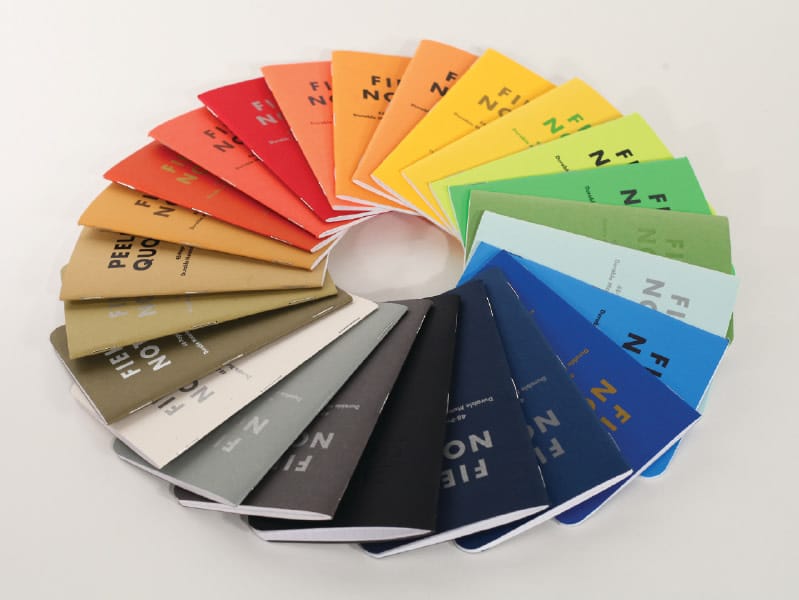
On knowing when to walk away from a job
“If you have to drag yourself to it, that’s not fair to the client. There were times I was like, ‘Oh, another season of snowboard bindings? Shit. What can I bring to the table here?’ It’s nice to make that money, but you’re just like, ‘Whoa, whoa, whoa. There might be a younger kid who will do it for the same price that will really be excited to do it. I might not be that guy anymore.’ And that’s okay. That’s what I told them. We did it for 10 years, so you just kinda know.”
On some of his favourite album covers
“There’s something about the cover of Bon Iver’s Bon Iver that made you feel excited to be inside listening to it. That’s what a record should do—make you feel like it’s gonna take you somewhere.
“I go back and think of some of the Son Volt record covers, that to me, are just beautiful: Trace, Wide Swing Tremolo, Straightaways.
“Those records make you wanna get in a car and drive, because it’s pictures of America, crusty little dials on an amp, and crusty little radio waves and shit. That’s just the detritus of America—all this debris of America. And they captured it in a way that felt new and it’s sort of like retro collage sensibilities. It felt new to go back and take those influences and make it into something new. That’s really what I’m trying to do all the time with my shit.”
On what the goal of design should be
“Take a Drive-By Truckers record. It’s got those crusty little paintings on there. At least they stick to their guns with that guy, I like that. Now, when you see that, that’s a Drive-By Truckers product. And I love ‘em for doing that.
“My favourite stuff will make you excited to own it. My favourite stuff will make you excited to open it up. My favourite stuff will make you excited to read every little detail, ‘cause every little thing was considered. I tried to do that with my book Draplin Design Co : Presque tout, to feel like every page meant something. ]
“Too many times you’ll pick up a new record and be like, ‘Fuck man, they’re just droppin’ the ball. They could’ve done so much more, and they didn’t.’ That bums me out. I love when you see—even if it’s not all that successful—that someone tried to make it great.
“Something that comes to mind right away is Wilco. Those guys really know their shit. They’re smart, I love their records, I love how sophisticated they are and how odd they are. Sometimes it feels a little high, but it’s not above me.”
On the most important part of client relationships
“Try to get them comfortable from the get-go. Try to get them to where they feel you’re fighting for them, you’re gonna be on time. None of that shit’s negotiable. The moment you’re late with showing someone, you’re in a different realm. You’re in a different shitty realm, where people are gonna discount you. So I try not to lead by that. I try to say, if you’re gonna see it by Friday morning, fuck, I’ll send it to you Thursday night, excited.
“That’s how you win people. You get ‘em excited by showing ‘em you’re excited. And then you don’t get the hemmin’ and hawin’. A lot of that shit is just PR. You’re just trying to get people to feel like they’re loved and you’re into it. I’m getting paid, and I’m thankful for that, and I’m gonna do a good job. That’s all.
“It’s weird when things get adversarial and you have to battle a client. That means you’re not showing them good enough shit. When you show them you worked hard and came up with a range of options and they get to pick, and get instant ownership, it’s coastin’. But it takes work to do that, work and effort to get to that.”
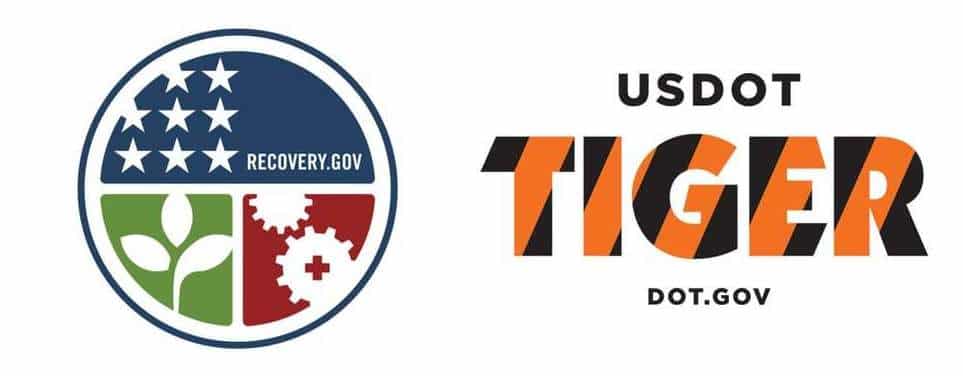
On working on the ARRA and TIGER logos
“It was terrifying. I was proud and I cried, because I’m a Democrat and I vote for human rights and blue state initiatives and shit like that. I vote for freedom for people and equality and stuff, and melt all the guns down. That’s the way I vote, and it wasn’t like you were necessarily working for a liberal President as much as you were working for America.
“He wasn’t doing the stimulus just for liberal people, he was doing it for every kind of person. So you’re working for America, and one of the things you forget about Obama, which is really interesting, is he’s not just representing left-leaning peoples. He’s representing all of America. That’s why he’s so careful with everything that comes out of his mouth. I think I know where his heart’s at, but he’s still representing the other side and has to do it and make initiatives and changes that benefit all peoples.
“Sometimes you lose, sometimes you win, and it’s been a slog. I just really appreciate that about him, and to be able to help out not just him, but be able to help out America? It was really moving.”
On the morals and ethics of deciding on jobs
“I think people will vet you before they come after you. There’s only been a couple times where, like, I’m not gonna do something for Camel Cigarettes, sorry. The way the guy pitched it to me was like, ‘I know you’re gonna say no, Draplin, but I wanted to see what you thought.’
“My questions quickly turned to, ‘Well, if I’m saying no, who said yes?’ And they’re like, ‘Here’s the list of guys who said yes,’ and you’re just kinda disgusted. Like, cigarettes are bad, man. I don’t wanna make shit for cigarettes, but some people need to make a living. It’s a person’s choice, if they want to put that shit in themselves then go for it. But who am I to say? I’m a guy who loves a Coke. I’m always trying to quit Cokes. And that shit’s terrible for you.”
On the most important lesson he’s learned from his life as a designer
“You can design the way you live and work and are creative. That’s a really cool thing. You have control over your life. You didn’t have to accept, ‘This job sucks, and I’m just gonna suck and at least make my rent.’
“What if it was more like, ‘I’m gonna go and invent my life because I’m being paid to do that by someone who’s paying me to invent design and things for their products, but I’m gonna make my own products.’
“So that’s what I did! Design taught me that we have that skill set within our fingertips. We’re trained to do it for other people for money. What about when you apply that to your own life? That’s what it taught me. You could curate and build your own life or house or a rental house or something. I don’t think other jobs that are just grinding jobs really offer you that sort of inspiration.”
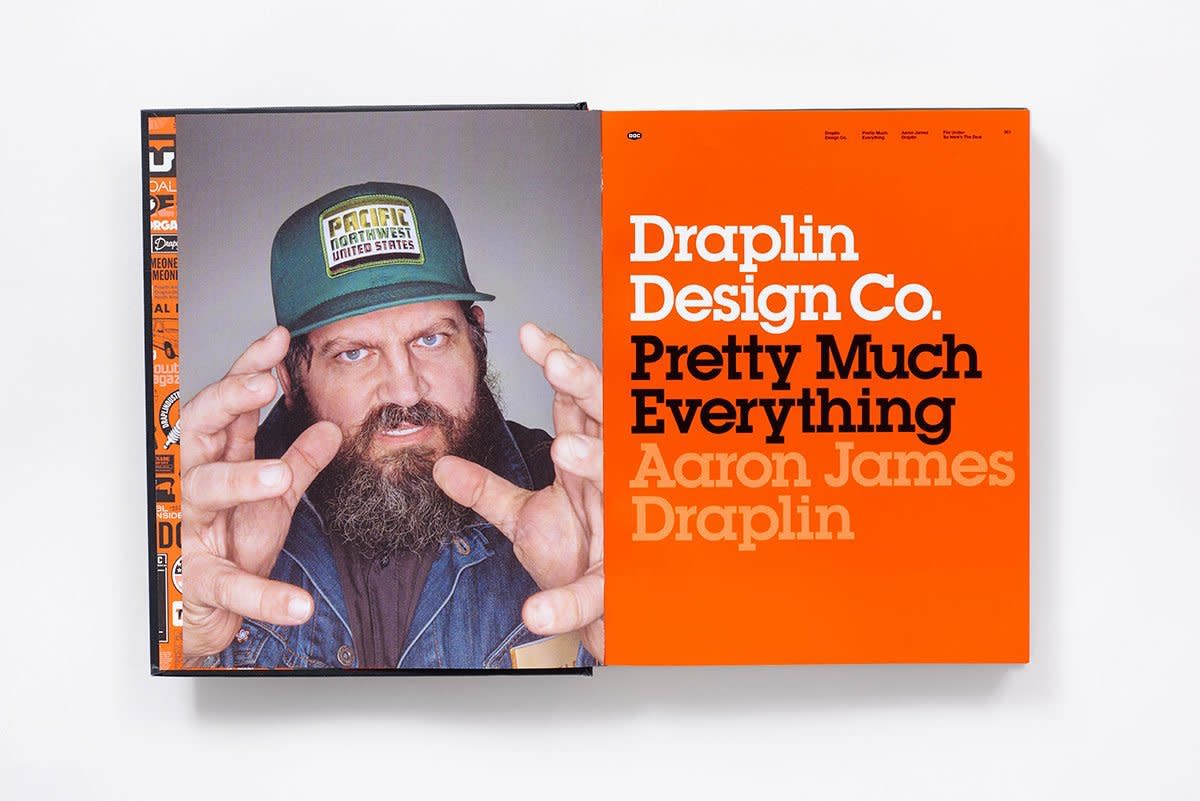
Get more of Aaron Draplin, including his new book, at Draplin.com.
